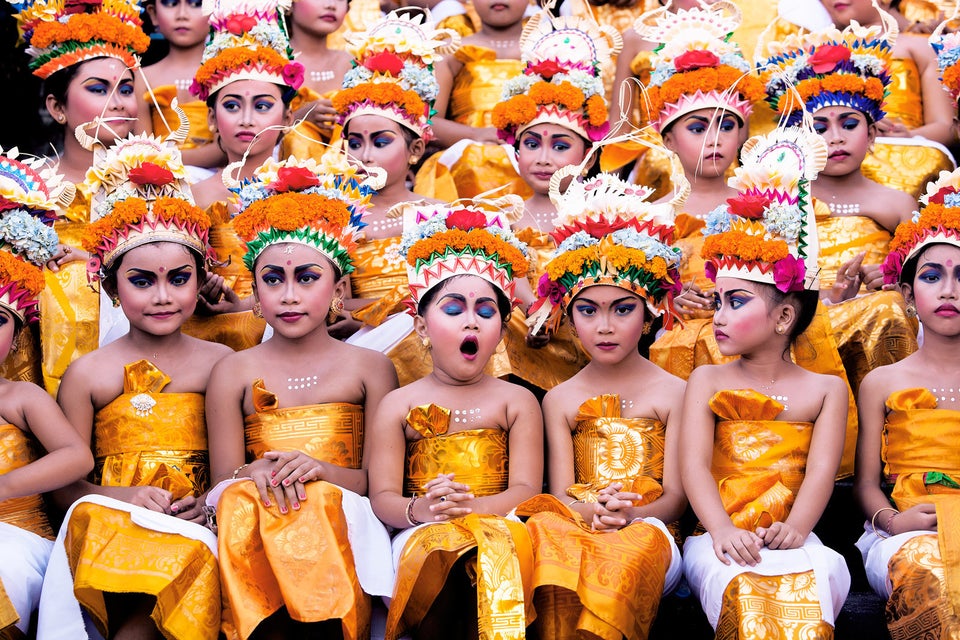In 1952, iconic street photographer Henri Cartier-Bresson published a book titled Images a la Sauvette or, as the American version is called, The Decisive Moment. The latter title is a nod to Cardinal de Retz's quote, blurbed at the beginning of Cartier-Bresson's book: "There is nothing in this world that does not have a decisive moment."
The words aptly summarize the great image-maker's style. "In photography, you've got to be quick, quick, quick, quick," Cartier-Bresson once explained. "Like an animal and a prey." Because to him, photography was "the simultaneous recognition, in a fraction of a second, of the significance of an event as well as of a precise organization of forms which give that event its proper expression." Of course, a photographer could very well encounter a plurality of decisive moments in their career. Thus Cartier-Bresson would amend the title slightly, in fellow photographer Martin Parr’s personal copy of the book, so that it read: The More or Less Decisive Moments.
More than half a century after the publication of his book, Magnum Photos -- the international photography collective Cartier-Bresson founded in 1947 -- is paying tribute to this idea of "decisive moments" in pictures. In honor of its 70th birthday, Magnum is hosting a five-day online sale, appropriately dubbed "The (More or Less) Decisive Moments," consisting of a group of spectacular split-second shots chosen by 60 different photographers, past and present.
To round out the project, each photographer -- or, in some cases, a photographer's relative or estate representative -- wrote an explanation of what makes each shot so decisive. The explanations, along with the images available to purchase for $100, will be on view from June 6 to June 10, 2016. See a preview of 10 of the selected images below.
NEWSHKA TAVAKOLIA
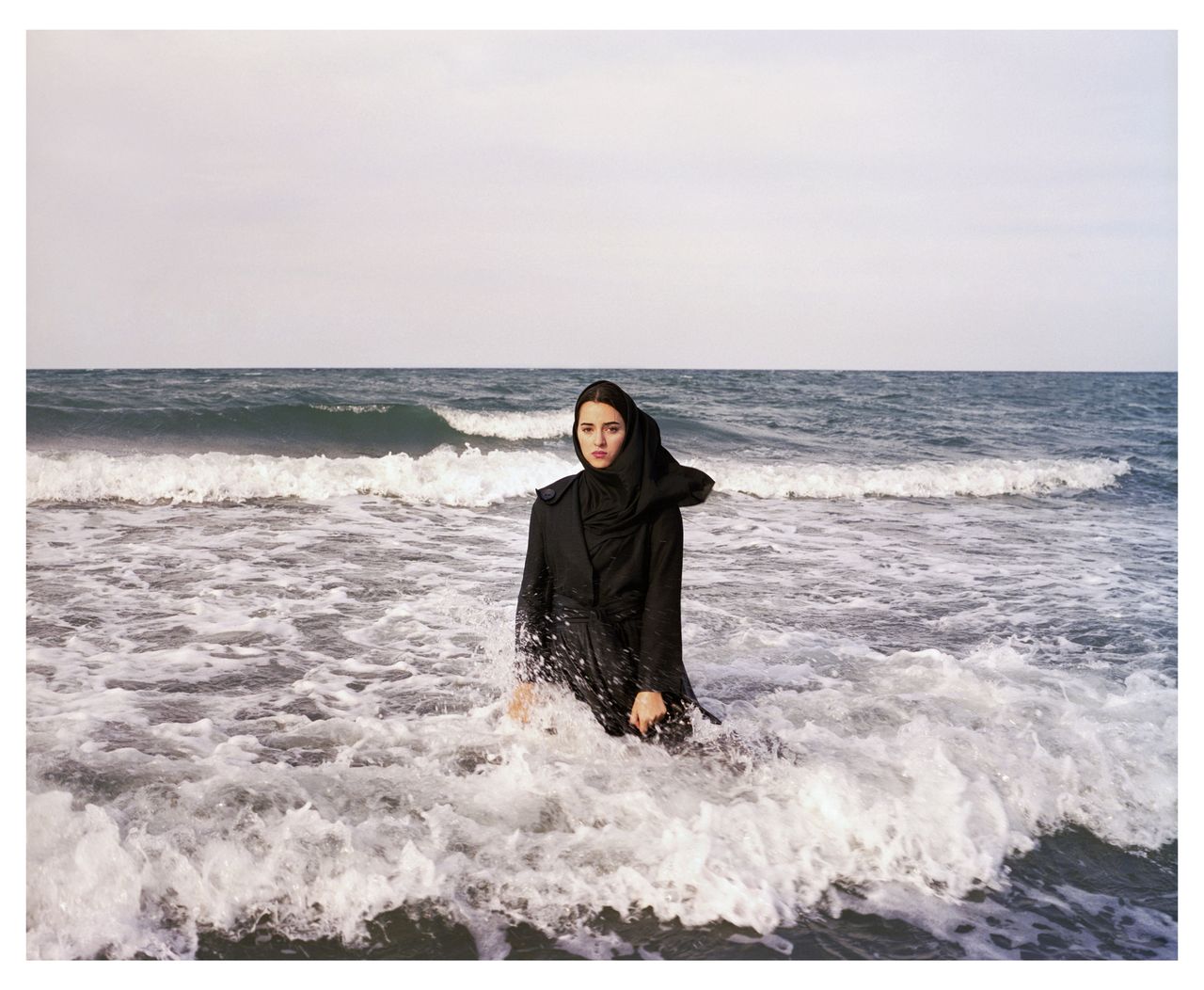
“For my project 'Listen' I made a series of imaginary CD covers for six women singers. I shot several situations, but this one, taken on the shores of the Caspian Sea, came about by a stroke of luck. My sister (the model) was waiting in the freezing water, waves were breaking all around her, there was wind and there were onlookers. I hurriedly made a series of shots, focusing on her while she was withstanding the elements. I remember driving home wondering if I had gotten the picture I wanted. I shot analogue so had no way of knowing. When I got the contact sheets it became clear that for one image everything that I was looking for had fallen into place: two waves are breaking at exactly the right moment, her position is just as I hoped it to be. Most importantly, her gaze, straight into the lens, for me at least, completes the picture."
ALEX WEBB

“Probably no photographer has influenced me for as long as Henri Cartier-Bresson. For some 50 years, I’ve been drawn to his early, pre-war work with its surreal ambiguity. However, ever since I first saw my father’s copy of The Decisive Moment in the late 1960s, I’ve been uneasy with the title. The notion of a ‘decisive moment’ seems just too pat, too unpoetic for such a complicated vision. Years later, it was gratifying to discover that the original French title was Images à la Sauvette -- ’Images on the Sly’ -- a humbler notion more in the spirit of his early street photographs, work that embraces the mystery and uncertainty of collaborating with the world. ‘It is the photo that takes you,’ as he once said.
"There are many photographs of mine that have ‘taken’ me. I chose 'Havana, 1993' because Cuba, then, seemed suspended in time, echoing the feel of the Spanish streets in the 1930s that Cartier-Bresson photographed so memorably. I suspect that the Cartier-Bresson I knew would have been skeptical of the color of this homage to him -- but I’d like to think his younger, surrealistic self would have at least appreciated the two boys in the background with that soccer ball hovering overhead, out of reach forever."
HIROJI KUBOTA
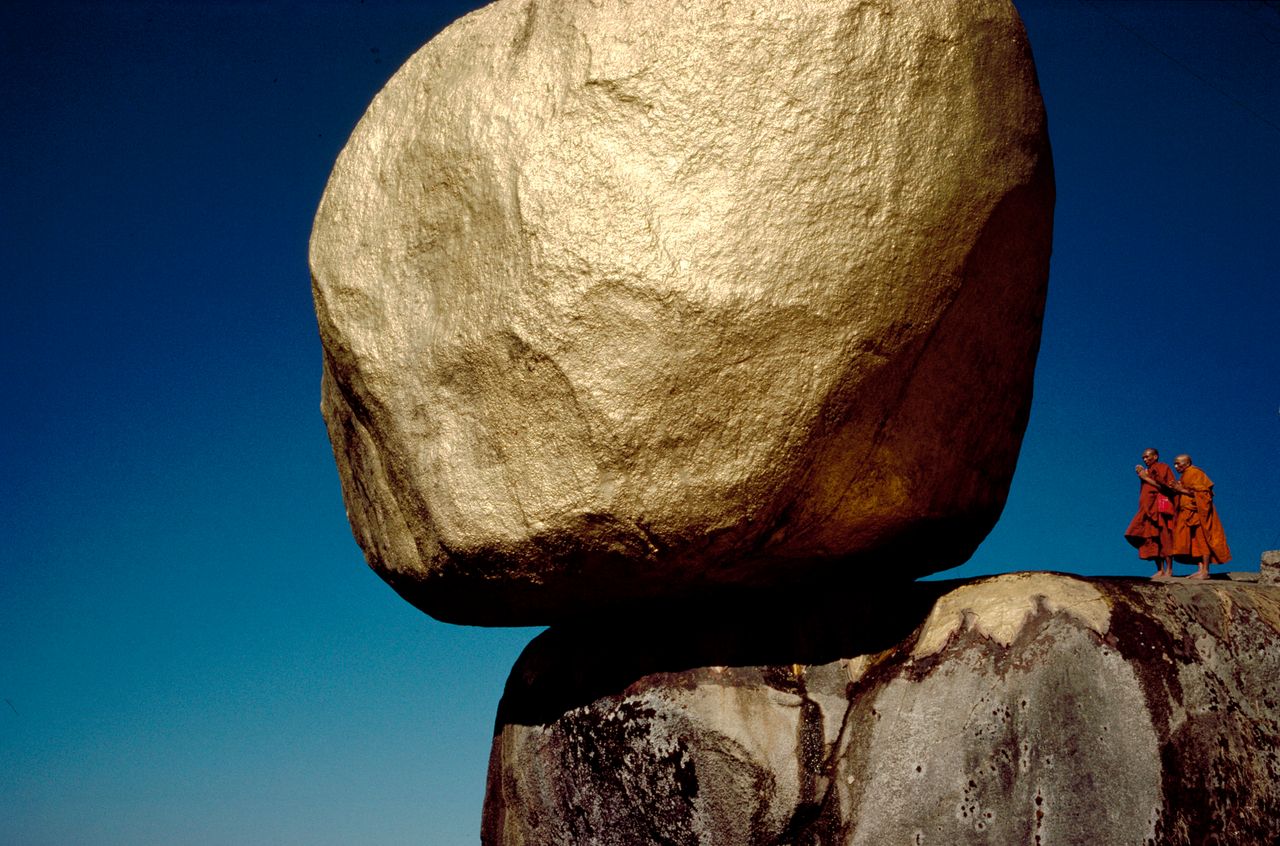
“This photo has become well known, which is, in a way, quite understandable, but for the people of Burma or Myanmar, especially Buddhists, the way I composed this without a holy pagoda on the top of the rock is disturbing. I went to the rock three times, and I visited the wonderful land and people, so opposite of America, well over 50 times between 1975 and '78. It has a lot to do with my coverage on the fall of Saigon for a popular American weekly magazine for six weeks in 1975. I was desperate to keep a distance from America for a while; luckily, I found Burma and its gentle and compassionate people. In the spring of 1978, on the top of the hill where I took this photo, I had two Leica bodies: the one with Tri-X and the other with Kodachrome 64. Soon after, I realized that the color one looked very colorful and was more powerful. That was my decisive moment, to become a color photographer.”
EVE ARNOLD
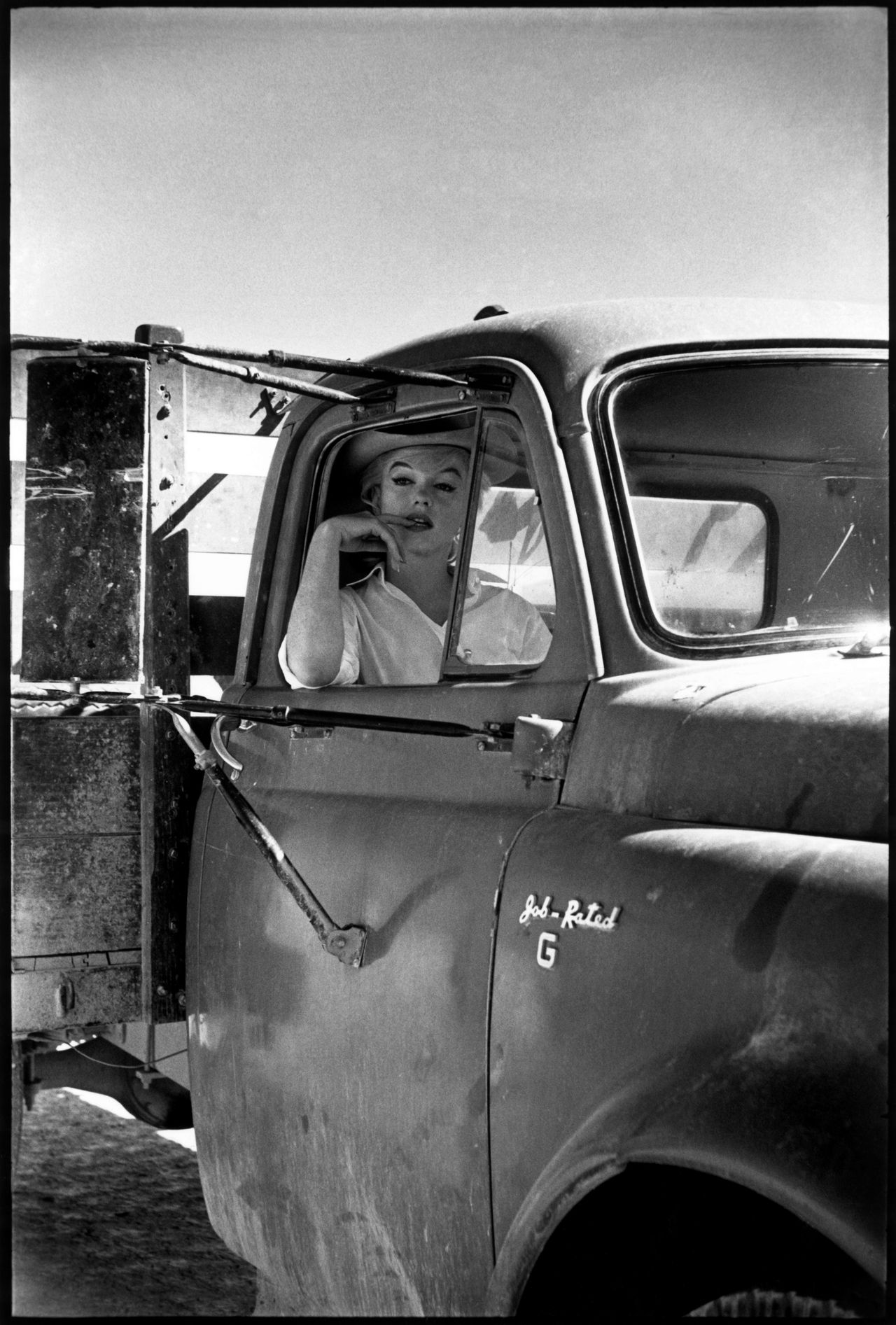
“I never knew anyone who even came close to Marilyn in natural ability to use both photographer and still camera. She was special in this, and for me there has been no one like her before or after. She has remained the measuring rod by which I have -- unconsciously -- judged other subjects."
BRUNO BARBEY

“I remembered the 1930 photograph by Martin Munkacsi of three backlit kids running towards the foamy waves of Lake Tanganyika: Cartier-Bresson said it had inspired his work. In my picture, the children’s movement seems broken down into its successive phases, as in a Muybridge photograph; one child still has a foot on the river bank, others are flying all the way up in the air; several are touching the river’s surface. The river is like a murky mirror that reflects their shadows, grouped in a perfect triangle.
"In the 1960s, most Magnum photographers, except for Ernst Haas, used black and white, in part because magazines did not reproduce color well, but when I went to Brazil I was astounded by the light and color, so similar to Morocco where I had spent my youth. My response was to start shooting in Kodachrome 2. The film was slow but perfect because of its resistance to heat and humidity. As of that year, color became an essential component to my work: color was my decisive moment.”
MICHAEL CHRISTOPHER BROWN

“Sometimes I’m able to capture a decisive moment and other times, call it slow or lazy, I’m just dumbfounded by what is in front of me and am either late or I completely forget about photography and take no picture. In this case, I was lucky the dumbfounded-ness allowed me to at least be late and to take a ‘more or less’ decisive moment. It is ‘more or less’ decisive because when I consider the decisive moment I of course think of Henri Cartier-Bresson and a photograph with a subject engaged in a moment that lasts a fraction of a second. In this image there is a moment with the street barber and his tools, but it is secondary to the boy’s expression,the subject, which continued for at least a minute. From the time I first spotted him amid a flurry of shoppers during rush hour in downtown Dalian, China, until after the photograph was taken he was still as a stone, just like this.”
CHIEN-CHI CHANG
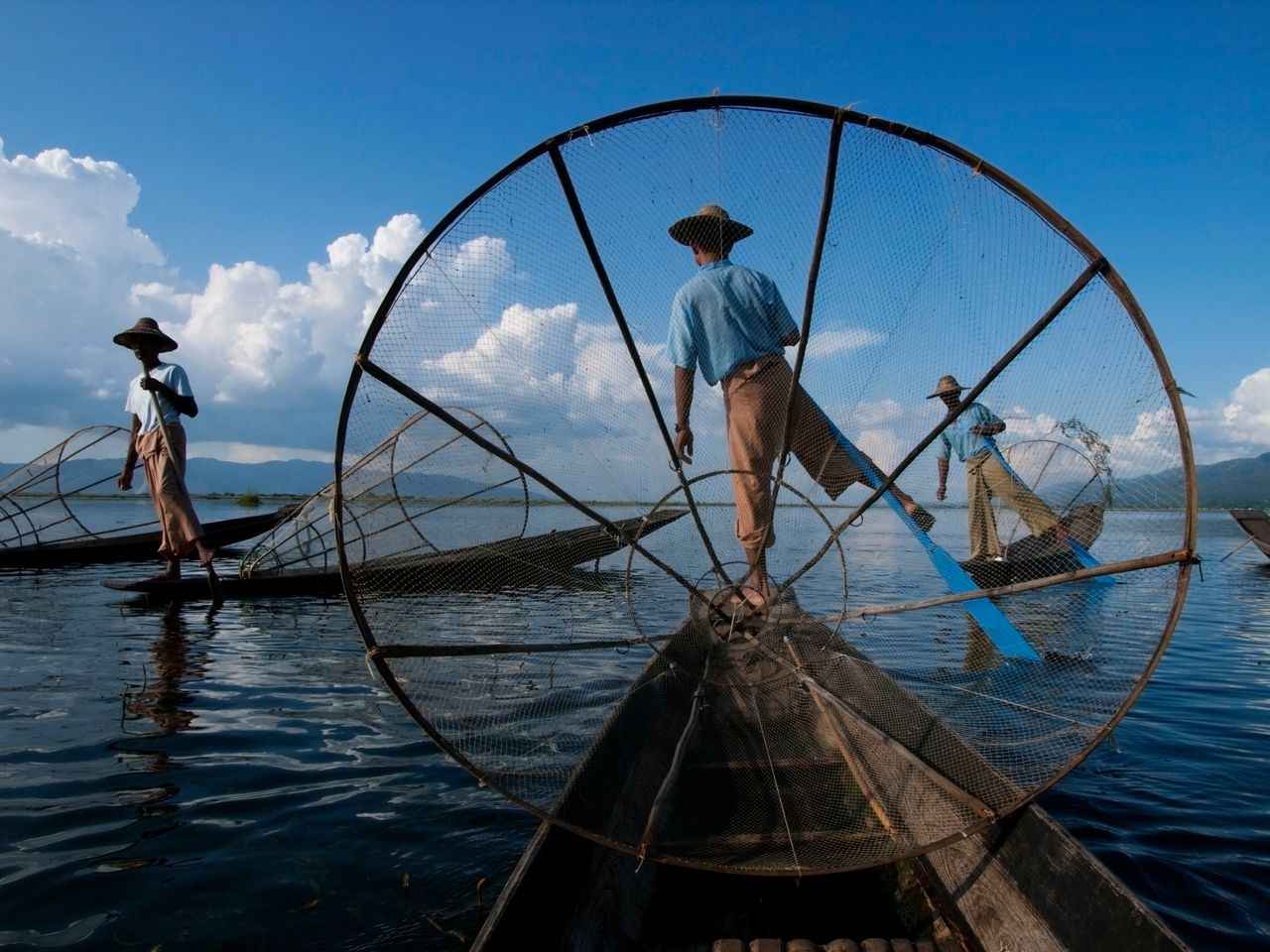
“Rowing with paddles attached to their legs so as to leave their hands free, fishermen on Northern Inle Lake, Myanmar, are today largely a tourist attraction. They play to the appeal of a land untouched by modernity. A decisive moment might have been when a fisherman was caught in the act of catching a fish, but now there are hardly any fish left. These fishermen are performers using Inle Lake as a backdrop, and thus the decisive moment is a moment of grace, when the light is right, the circles are in harmony, the legs upraised just so. Click.”
TIM HETHERINGTON

“How spontaneous is that glance? It’s hard to know if Tim made this portrait as a caught moment or as a process, but we do know that it was purposeful. Having deliberately identified it as a rubber tire, Tim further annotated the image with historical data: in 1926 the Firestone Rubber Tire Company signed a 99-year lease with the Liberian Government and rubber manufacture became the backbone of the economy. He later returned to the picture to note that in 2005 Firestone was sued in the US for slavery and use of child labor. Tim stored his photographic moments like bottles of wine, maybe inactive for years but never forgotten, and he would dip into the cellar to turn them occasionally until the moment matured.” -- Stephen Mayes, Tim Hetherington Trust
SUSAN MEISELAS

"The eye seeks a frame within which a gesture is suspended, motion frozen and all in balance. One can wander or wait to recognize and capture it."
SOHRAB HURA
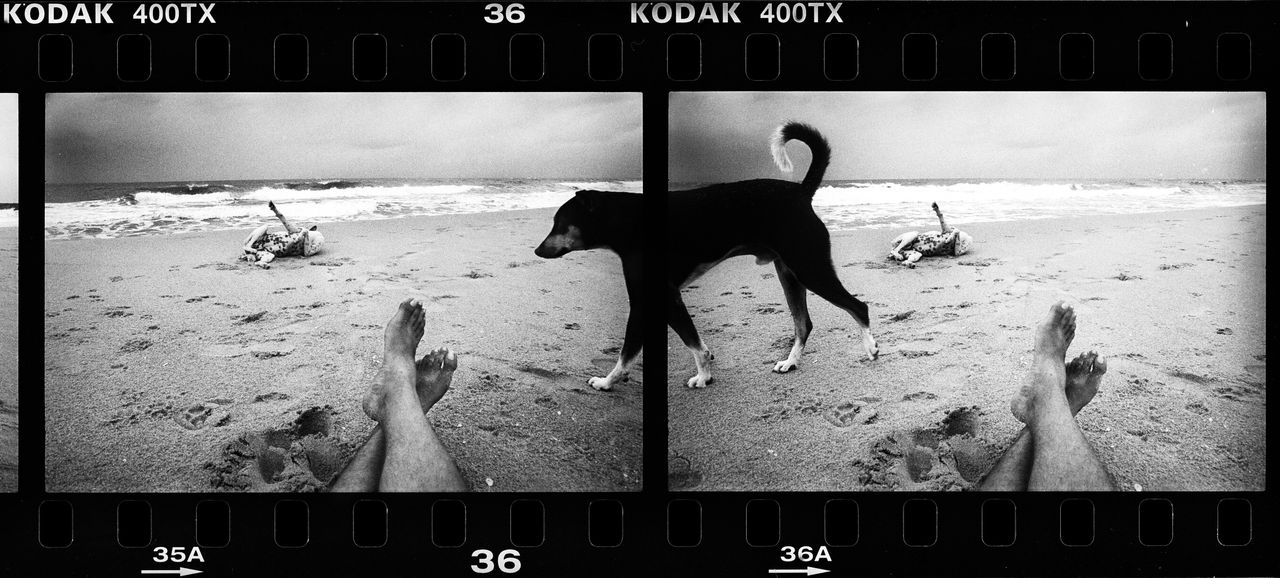
“I sat there on the beach, thinking of you: the black of you in all that white, tail rolling into whiplash. You had all of a sudden nipped your head back at me. Jowls hanging, ready to bellow a bark, your body curved perfectly in line with the deep slight arc in the snow above you. How that 25-year-old me wished hopelessly that I had met you before Josef had. And just then in a blink of an eye the dog crossed over to a past frame.This is perhaps the last photo from a time when, for me, photography was all about the idea of ‘the decisive moment.' Thank goodness I soon found a world far larger than it.”
"The (More or Less) Decisive Moments" explores the ways in which the notion of "decisive moment" -- long associated with Magnum co-founder Henri Cartier-Bresson -- is manifest in the work of Magnum photographers today. Signed or estate-stamped prints for $100 from over 60 photographers and artists will be available for a limited time, from 9 a.m. EST on Monday, June 6, until 11 p.m. Friday, June 10, 2016. All photos shown here are courtesy of Magnum Photos and the noted photographers and estates.

